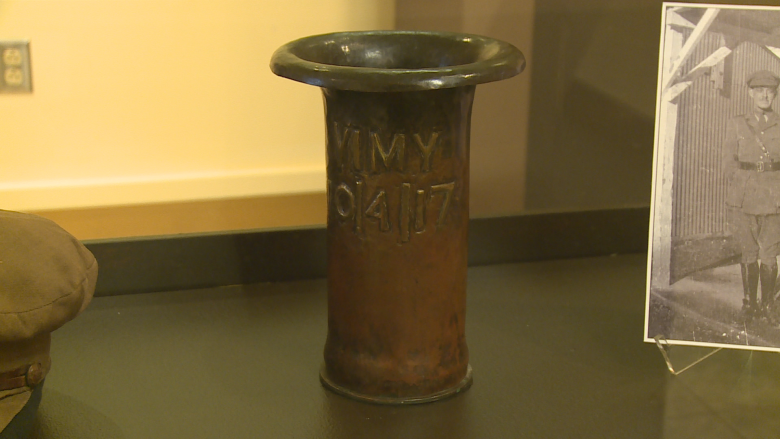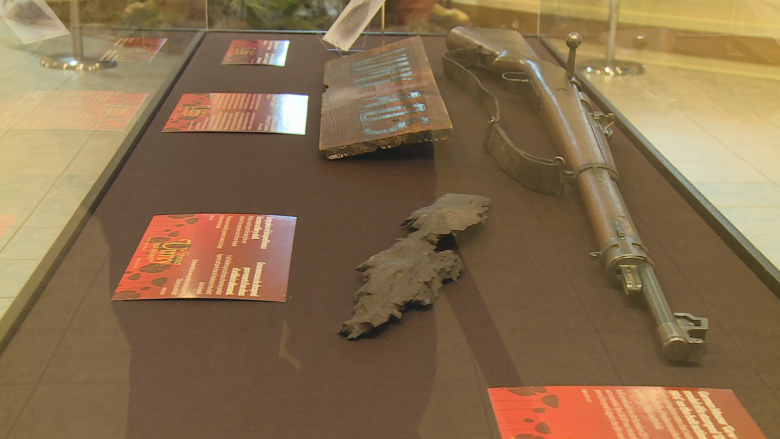Ballistic flower vase, shrapnel-pierced rifle among Vimy artifacts in N.B. exhibit
At first glance, the copper flower vase sitting near the entrance of the New Brunswick Museum is unremarkable, its shape prosaic, its brown lustre tranquil and dull.
But its inscription — April 10, 1917 — reveals a connection to Canada's defining military engagement of the First World War and its origins as a depleted German artillery shell collected from the battlefields of Vimy Ridge.
"It was done all behind the line," said Gary Hughes, curator of history at the New Brunswick Museum. "Some workers just worked away at it to make money off of Allied soldiers. And they were metal workers, and they were skilled in this or that, and some did it themselves when they were behind the lines."
The date on the vase is that of the second day of the historic battle in which Canadian forces suffered thousands of losses while taking a German stronghold, one that Allied troops had previously failed to capture.
It is part of the museum's commemoration of the 100th anniversary of the Battle of Vimy Ridge, which took place from April 9 through April 12, 1917.
"It is a significant part of our Canadian history, and identity," said Hughes.
In another display case lies a German rifle, picked up by a Fredericton man in the fields under the shadow of Vimy Ridge.
Beside it lies a long, jagged, sleeve of twisted metal; shrapnel from another German artillery shell.
"We did that because in the rifle itself is a small piece of shrapnel," said Hughes. "That would do some damage to you. The large piece would definitely kill you. And those things were flying around. Artillery was the great killer in the war."
Military uniforms worn by New Brunswick men during the battle are also on display, along with several other artifacts directly related to the battle that have New Brunswick connections.
Those items, along with their stories, will be on display for the next month.




